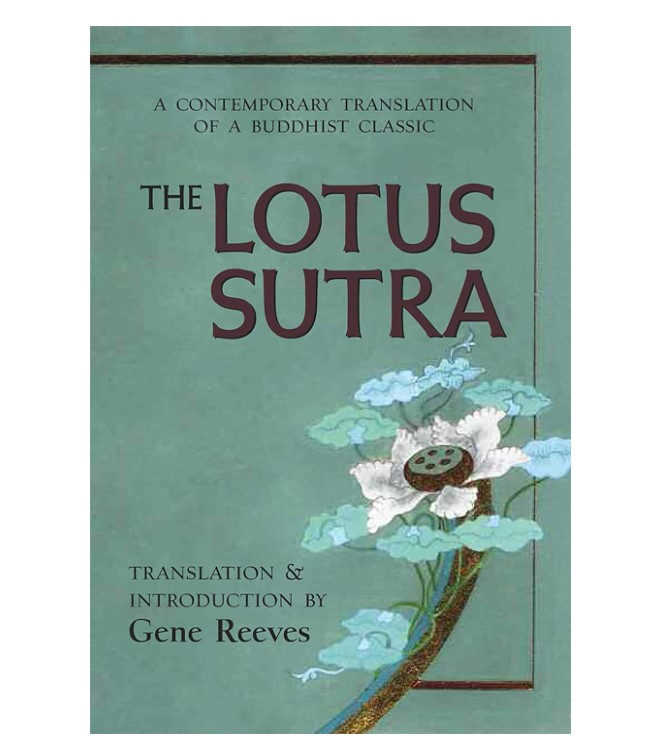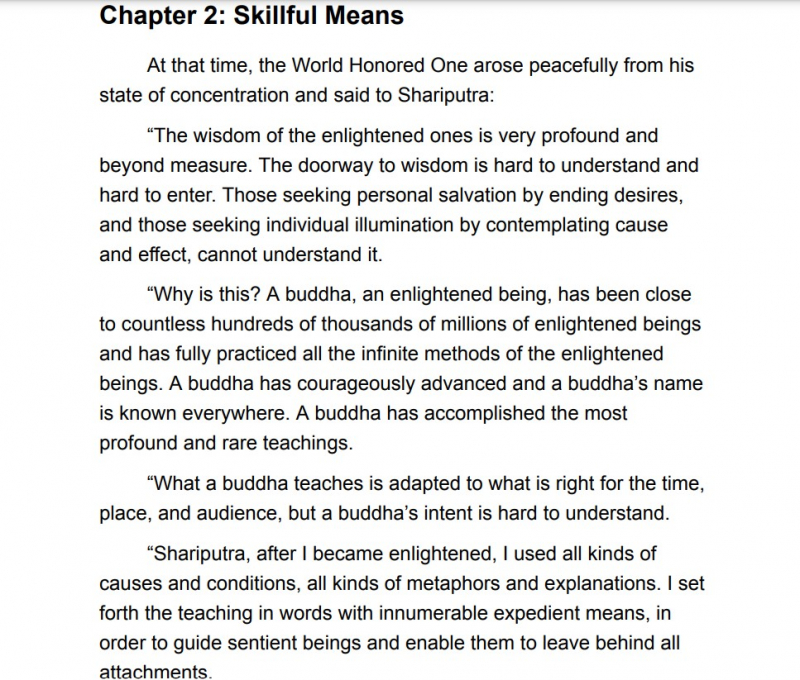Lotus Sutra (Saddharma Puṇḍarīka Sūtra)

The Lotus Sutra, also known as the Saddharma Puṇḍarīka Sūtra, is a central and revered text in Mahayana Buddhism. The name "Saddharma Puṇḍarīka" means the "Lotus of the Good Dharma." It's like a guidebook full of stories and wisdom, helping people on their journey to become better and kinder human beings.
The Lotus Sutra is presented as a discourse delivered by the Buddha, Siddhartha Gautama, on Vulture Peak in India. The book talks about something very important: that everyone has the potential to become a Buddha. A Buddha is someone who has reached the highest state of understanding and compassion. One of the key teachings of the Lotus Sutra is the concept of the "Buddha vehicle" (Buddhayana), which asserts that there is one ultimate path to enlightenment. And all the diverse teachings of the Buddha are skillful means to lead beings to this ultimate realization.
The Lotus Sutra also tells stories to explain its teachings. One famous story is the Parable of the Burning House, where a wise father uses skillful means to save his children from danger. This story teaches us about the Buddha's compassion and guidance. Another part talks about Bodhisattvas, who are like spiritual heroes trying to help everyone reach enlightenment. The Bodhisattva Avalokiteshvara, for example, makes a special vow to help people in need, showing the importance of compassion.
As one of the most sacred texts of Buddhism, the Lotus Sutra has been highly influential in shaping the Mahayana Buddhist tradition, particularly in East Asia. It has been revered and studied by various schools, including Tiantai in China and Tendai in Japan. The Lotus Sutra continues to inspire countless practitioners with its message of inclusivity, compassion, and the universal potential for enlightenment.
Link to buy: https://www.amazon.com/Lotus-Sutra-Contemporary-Translation-Buddhist/dp/0861715713
Link to read: https://terebess.hu/english/J.C.Cleary-Lotus.pdf











